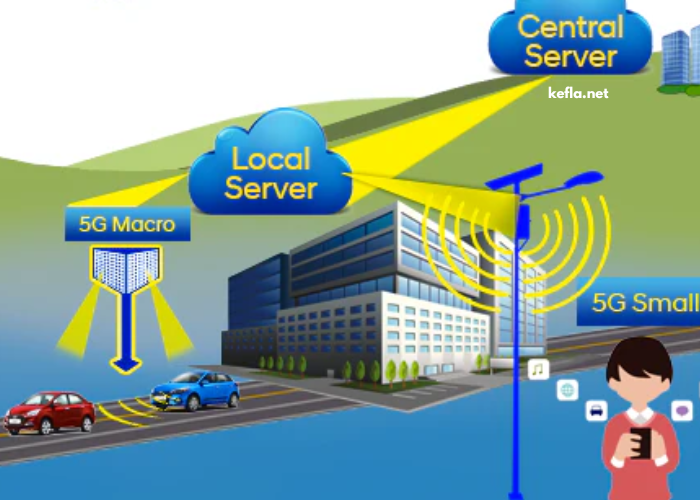The rollout of 5G technology is one of the most highly anticipated advancements in telecommunications, promising to revolutionize the way we interact with the digital world. As we transition into a future where nearly everything is connected, from smartphones to industrial machinery, the implications of 5G are profound. This next-generation technology promises lightning-fast data speeds, low latency, and more reliable networks that will serve as the foundation for a multitude of innovations across various sectors. In this article, we explore what 5G technology is, how it works, and the far-reaching impacts it will have on the future of connectivity.
What is 5G Technology?
5G is the fifth generation of mobile network technology, following the previous standards of 1G, 2G, 3G, and 4G. Each generation of mobile technology has brought incremental improvements, with 5G standing as the most advanced yet. It is designed to meet the growing demands of a world where billions of devices are interconnected, and where the demand for faster speeds, higher data capacities, and improved connectivity continues to rise.
While the core concept of 5G is similar to previous generations—providing faster and more reliable mobile communication—it introduces new technologies that enable more efficient, high-performance networks. These technologies include advanced radio frequencies, massive MIMO (Multiple Input Multiple Output) systems, and network slicing, among others.
Key Features of 5G
Faster Speeds
One of the most exciting features of 5G is its ability to provide data speeds up to 100 times faster than 4G. This translates to download speeds of up to 20 Gbps (gigabits per second) under ideal conditions. With 5G, consumers will be able to download large files, stream high-definition content, and engage in real-time activities such as gaming with almost zero buffering or delays.
Ultra-Low Latency
5G also significantly reduces latency—the time it takes for data to travel from one point to another. 4G networks typically have a latency of 30 to 50 milliseconds, while 5G networks can reduce that to as low as 1 millisecond. This ultra-low latency is crucial for applications that require real-time data transmission, such as remote surgeries, self-driving cars, and augmented reality (AR) or virtual reality (VR) experiences.
Increased Capacity
With the exponential growth in the number of connected devices, particularly in the Internet of Things (IoT), 5G will provide the necessary bandwidth to support billions of devices simultaneously. This is made possible through the use of higher frequency bands, allowing for more efficient transmission of data. The result is a network that can handle the enormous demand for data, even in densely populated areas.
Enhanced Reliability
5G is designed to be more reliable than previous generations of mobile networks. The technology employs advanced algorithms to optimize the network and ensure that users experience fewer disruptions or dropped connections. This is particularly important in mission-critical applications, such as remote monitoring of industrial equipment or public safety systems.
How 5G Works
5G technology relies on a combination of advanced radio frequencies, new infrastructure, and software innovations to deliver its superior performance. It uses a broader range of frequencies compared to previous generations, including the millimeter-wave spectrum, which allows for faster data transmission.
High-Frequency Bands
The millimeter-wave spectrum, which operates in the range of 24 GHz to 100 GHz, is a key enabler of 5G. These high-frequency bands can support incredibly high data rates, but they also have a shorter range and are more susceptible to interference from obstacles such as buildings or trees. To overcome this, 5G networks rely on small cells—compact base stations that can be placed in a variety of locations to ensure more widespread coverage.
Massive MIMO
Massive MIMO is a technology that uses multiple antennas at both the transmitter and receiver ends to send and receive more data simultaneously. This increases the capacity of the network and improves signal strength, which is particularly useful in dense urban areas where the demand for data is highest.
Network Slicing
Network slicing allows operators to create multiple virtual networks on a single physical 5G infrastructure. Each slice can be tailored to meet the specific needs of different applications. For example, one slice could be optimized for low-latency applications, while another could be dedicated to high-bandwidth streaming. This enables a more flexible and efficient use of network resources.
5G and the Future of Connectivity
Transforming Industries
The advent of 5G will not only impact consumers but will also have a profound effect on industries ranging from healthcare to manufacturing, transportation, and entertainment. Here’s a look at how 5G will transform key sectors:
Healthcare
In healthcare, 5G has the potential to revolutionize the way medical services are delivered. The ultra-low latency of 5G networks will enable real-time remote monitoring of patients, allowing healthcare professionals to track vital signs and respond to emergencies in real time. Additionally, 5G’s high-speed data transmission will make it possible to perform remote surgeries, where a surgeon can operate on a patient thousands of miles away with precision.
Autonomous Vehicles
5G will play a critical role in the development and deployment of autonomous vehicles. The low latency and high-speed data capabilities of 5G networks are essential for enabling vehicles to communicate with each other and with infrastructure (such as traffic signals) in real time. This communication is vital for ensuring the safety and efficiency of self-driving cars.
Smart Cities
The concept of smart cities, where urban infrastructure is connected and optimized through technology, will be realized through 5G. High-speed, low-latency networks will enable more efficient management of public services such as waste disposal, traffic control, and energy consumption. For instance, traffic lights could adjust in real time based on traffic conditions, reducing congestion and improving the flow of vehicles.
Manufacturing and Industry 4.0
5G will be a key enabler of Industry 4.0, the fourth industrial revolution characterized by the integration of advanced technologies like AI, IoT, and automation in manufacturing. With 5G’s ability to support a large number of connected devices, factories will be able to create smart manufacturing environments where machines, robots, and sensors communicate seamlessly to optimize production processes.
Enhancing Consumer Experiences
For consumers, 5G will unlock new possibilities for entertainment, communication, and everyday life. Some of the key areas that will see significant improvements include:
Augmented and Virtual Reality
5G will be a game-changer for augmented reality (AR) and virtual reality (VR) experiences. The ultra-low latency and high-speed data transfer capabilities of 5G will allow for more immersive and seamless AR and VR experiences. Whether it’s gaming, education, or entertainment, 5G will bring these technologies to life in a way that was previously not possible.
4K and 8K Streaming
With the speed and reliability of 5G, consumers will be able to stream high-definition content, including 4K and 8K video, without interruptions. This will make services like Netflix, YouTube, and other streaming platforms even more appealing, as users can enjoy higher-quality content without buffering or delays.
Gaming
Online gaming will be greatly enhanced by 5G technology. The ultra-low latency and high-speed data transfer will enable more responsive, lag-free gameplay. Cloud gaming services, such as Google Stadia and Microsoft’s Xbox Cloud Gaming, will also benefit from 5G, as users will be able to stream high-quality games directly to their devices without needing expensive gaming hardware.
The Challenges of 5G Deployment
While the potential of 5G is immense, there are several challenges associated with its deployment. One of the biggest hurdles is the cost of infrastructure. Building a 5G network requires significant investment in new hardware, such as small cells, antennas, and fiber-optic cables. Additionally, the need for a denser network of base stations can increase the complexity and cost of deployment, especially in rural or less densely populated areas.
Another challenge is the regulatory landscape. Different countries have varying approaches to allocating spectrum and building out 5G infrastructure, which can create delays and inconsistencies in the global rollout of 5G networks. Furthermore, concerns about the health effects of 5G’s higher frequency radiation have been raised, though scientific studies have not found any conclusive evidence of harm.
Conclusion
The advent of 5G technology marks the beginning of a new era in connectivity. With faster speeds, lower latency, and greater capacity, 5G will transform the way we live and work, enabling innovations in fields like healthcare, transportation, entertainment, and smart cities. While the deployment of 5G presents certain challenges, the potential benefits far outweigh the obstacles. As 5G networks continue to expand and evolve, we can expect to see even more groundbreaking applications that will redefine the future of connectivity.
As we move forward into this new era, 5G will serve as the backbone for the next generation of technologies that will shape our world. Whether it’s through self-driving cars, telemedicine, or immersive virtual experiences, 5G will play a pivotal role in connecting the world in ways we have only begun to imagine. The future of connectivity is bright, and 5G is leading the way.





